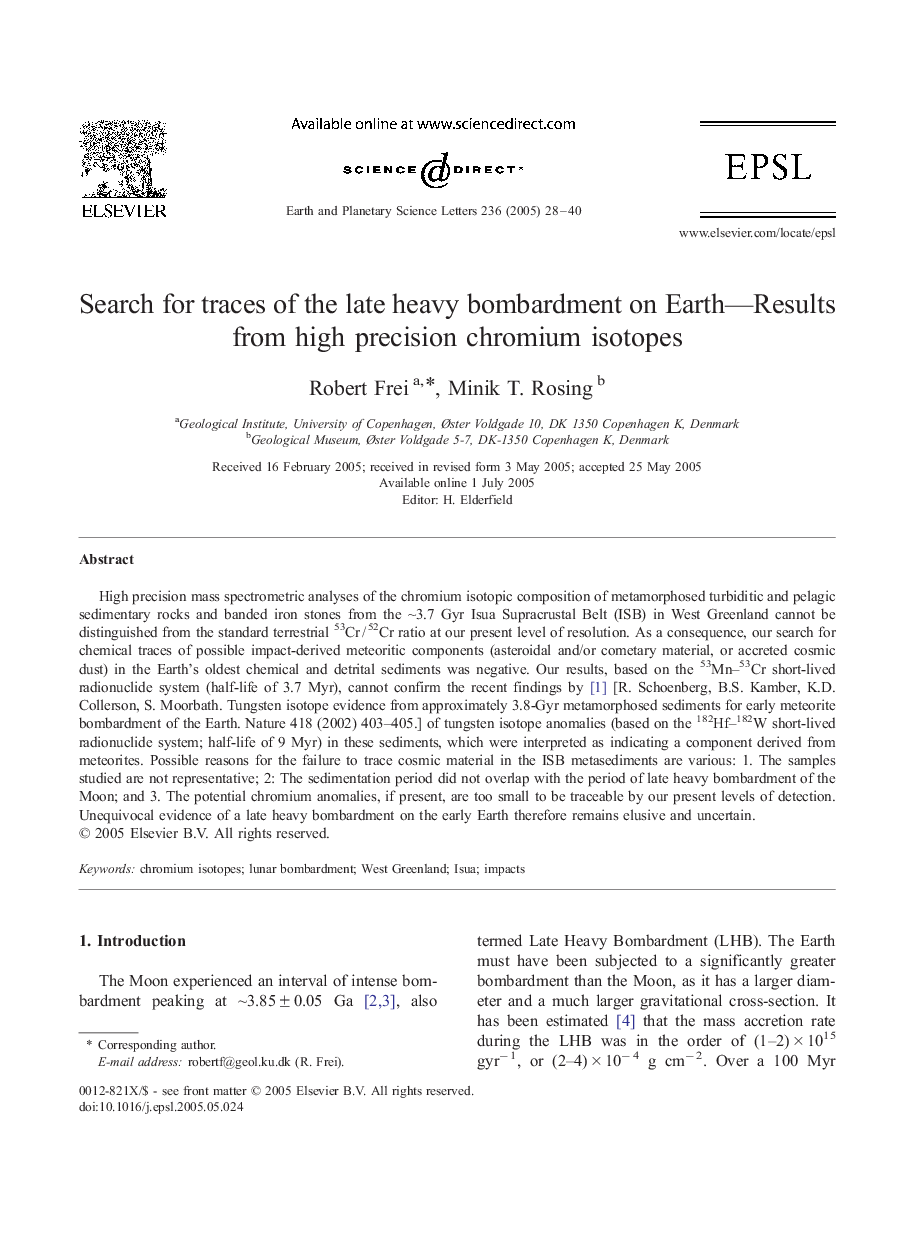| Article ID | Journal | Published Year | Pages | File Type |
|---|---|---|---|---|
| 9522129 | Earth and Planetary Science Letters | 2005 | 13 Pages |
Abstract
High precision mass spectrometric analyses of the chromium isotopic composition of metamorphosed turbiditic and pelagic sedimentary rocks and banded iron stones from the â¼3.7 Gyr Isua Supracrustal Belt (ISB) in West Greenland cannot be distinguished from the standard terrestrial 53Cr / 52Cr ratio at our present level of resolution. As a consequence, our search for chemical traces of possible impact-derived meteoritic components (asteroidal and/or cometary material, or accreted cosmic dust) in the Earth's oldest chemical and detrital sediments was negative. Our results, based on the 53Mn-53Cr short-lived radionuclide system (half-life of 3.7 Myr), cannot confirm the recent findings by [1] [R. Schoenberg, B.S. Kamber, K.D. Collerson, S. Moorbath. Tungsten isotope evidence from approximately 3.8-Gyr metamorphosed sediments for early meteorite bombardment of the Earth. Nature 418 (2002) 403-405.] of tungsten isotope anomalies (based on the 182Hf-182W short-lived radionuclide system; half-life of 9 Myr) in these sediments, which were interpreted as indicating a component derived from meteorites. Possible reasons for the failure to trace cosmic material in the ISB metasediments are various: 1. The samples studied are not representative; 2: The sedimentation period did not overlap with the period of late heavy bombardment of the Moon; and 3. The potential chromium anomalies, if present, are too small to be traceable by our present levels of detection. Unequivocal evidence of a late heavy bombardment on the early Earth therefore remains elusive and uncertain.
Related Topics
Physical Sciences and Engineering
Earth and Planetary Sciences
Earth and Planetary Sciences (General)
Authors
Robert Frei, Minik T. Rosing,
